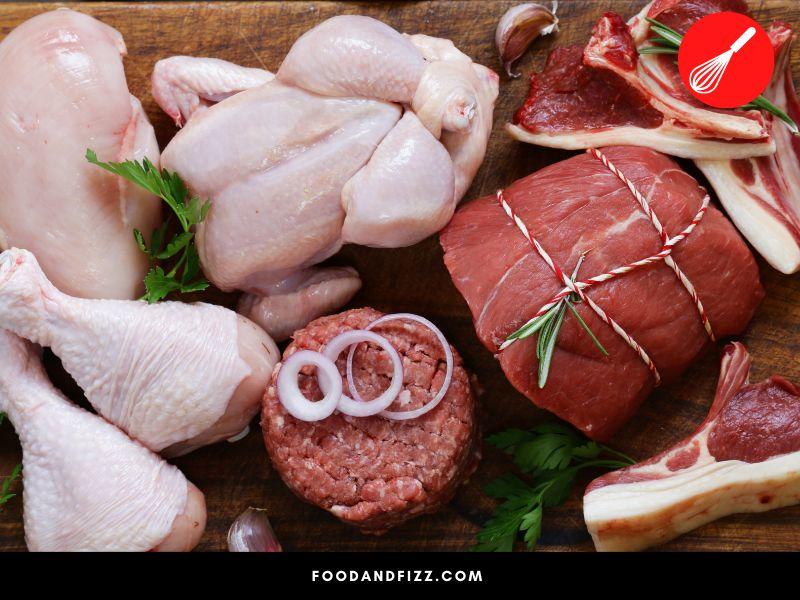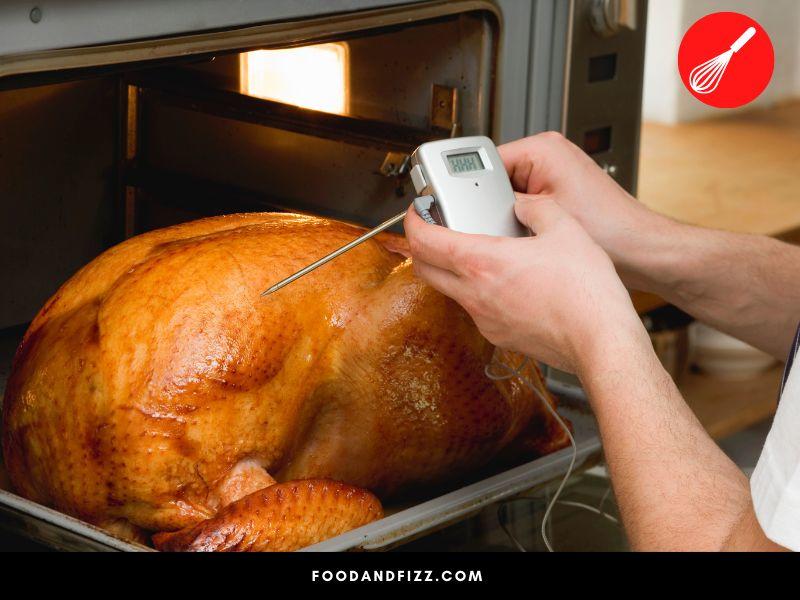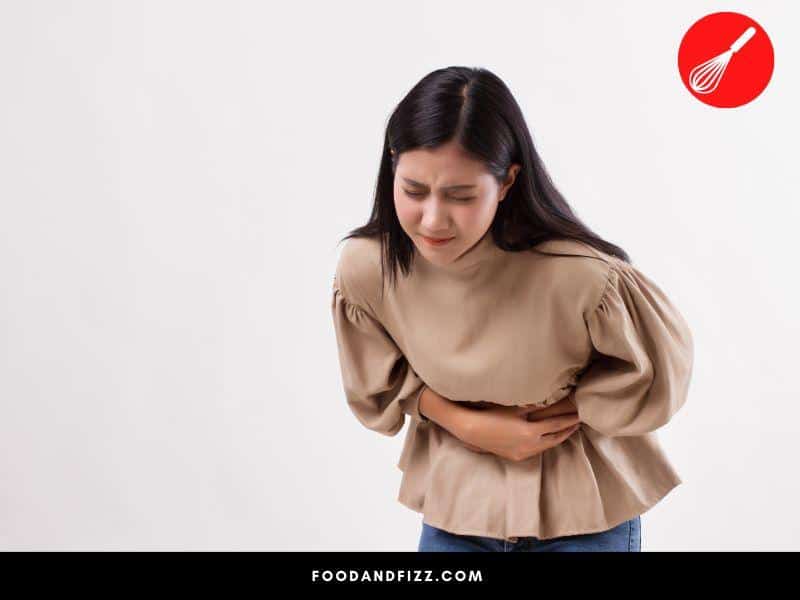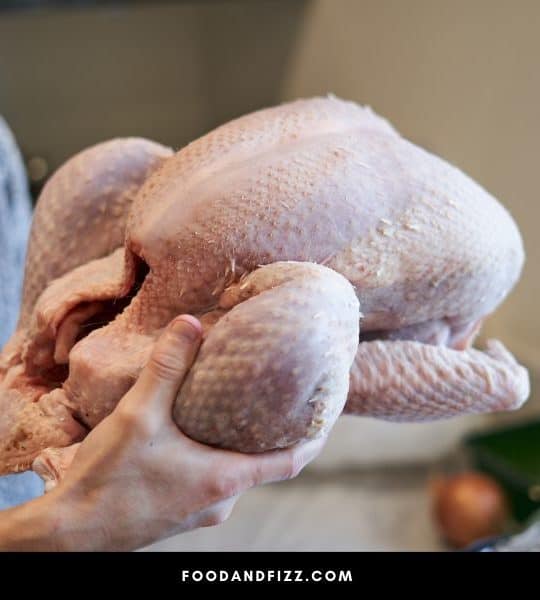You cooked a turkey for Thanksgiving, but it seems to have some juice in it. Your first instinct is to conclude that the turkey is uncooked. But is it?
Is It Safe to Eat Bloody Juice Inside A Turkey?
As long as the juice that comes out of the turkey isn’t blood, the turkey is safe to eat. Bloody juice is often perceived to be blood when it is often not. The red color is actually due to the presence of myoglobin which makes the turkey safe to eat.

I know what you’re thinking.
“What is myoglobin and is it dangerous?”
I’m about to answer all those questions, but let’s start from the start.
What Exactly Is That “Bloody” Juice?
Juice that often comes out of turkey, commonly referred to as “bloody” juice, has nothing to do with blood. As hard as it may be to believe so, it is the truth.
Turkey, like other food items, has a high percentage of water inside it (not talking about a living turkey!). When the meat is frozen, the water inside the meat also freezes – obviously.
Upon freezing, crystals are formed because of this water. These crystals are sharp – sharp enough to penetrate and rupture the muscle cells in the meat.
When this happens, a chemical from the meat, myoglobin, gets mixed with the water. This is the water that comes out, and what people perceive to be “bloody.” This myoglobin is actually safe to consume.

What is Myoglobin?
All you need to know is that myoglobin is a protein found in meats that, along with other small factors, determines the color of the meat (raw and cooked).
To be specific, the pH value of the meat combined with the myoglobin level determines the meat’s color.
To be a bit more precise, myoglobin is a heme iron having protein which makes it a great source of iron. Foods rich in myoglobin are considered to be “healthier” than those without it.
One of the major functions of this protein is to transport oxygen to the muscle cells. This agrees with my statement that myoglobin is mixed with water when muscle cells are ruptured.
We’ve already established that the “bloody” juice we see in turkey meat is just water mixed with myoglobin. Since the only different thing in that juice (from what we normally consume) is myoglobin, the juice should be safe to consume if myoglobin isn’t dangerous.
So, don’t worry about getting sick from the Salmonella in the turkey!
Even if you cook a turkey at its ideal cooking temperature, this will still be present. The discoloration happens only at around 180°F which is well above the ideal internal cooking temperature.
P.S: Though a magnitude of things determine how healthy a food is, a comparison has been done only to show the importance of myoglobin.

Is Myoglobin Safe to Eat?
Myoglobin is found naturally in meats and isn’t added artificially. It is perfectly safe to consume and has no health effects. If anything, it has the opposite effect (provided it is not taken in an excessive amount).
Turkey is a type of white meat. In comparison to red meats, white meats don’t have a lot of myoglobin (myoglobin gives meat its red color).
If you’re stressing about overconsumption of myoglobin from turkey, there’s no need to. You shouldn’t worry about overdosing on myoglobin just from eating turkey (even a lot of them)!
What is the Ideal Cooking Temperature and Time for a Turkey?
For the next time, you cook turkey, make sure to cook it at its ideal temperatures. You can use a cooking thermometer to do so safely.
A safe internal cooking temperature of 165°F for turkey (poultry products) is recommended.
As a general rule of thumb, allow at least two hours for every 10 lbs. If your turkey doesn’t have a convenient weight (let’s say 12.3 lbs.), here is a handy formula to calculate the cooking time;
Cooking Time (in hours) = Weight (in lbs.) / 5
Though these are the recommended times (assuming a constant temperature of around 350°F), you do not need to stick to these religiously. Check once every 15 – 20 minutes how well your turkey is cooked.
Sometimes, it might take longer. At times, it might be quicker than usual. Do not solely rely on the time to judge whether a turkey is cooked or not. Either use a food thermometer or check the rawness manually.
Important: When you measure the internal temperature, make sure to do so from the thickest part of the thighs.

Beware of Uncooked Turkey
Ensure that your turkey is not uncooked as the Salmonella present inside it can have severe health effects.
People can experience diarrhea, fever, and stomach cramps which can last for at least 96 hours to 168 hours or you can say for up to 4-7 days.
In an outbreak that broke out in 2019, 358 people were reported to have been infected across 42 states (according to the information that CDC and USDA-FSIS shared with the International Federation).
Children under five, pregnant women, and people above 65 are most vulnerable to this.

Frequently Asked Questions to Bloody Juice Inside A Turkey – Safe to Eat?
Is Red Juice from a Turkey Okay?
As long as the turkey has been cooked to 165°F (or above), the red juice is okay, and you can consume it safely.
Should A Cooked Turkey Bleed?
Cooked turkeys should not bleed. What you perceive as blood is more often than not just myoglobin mixed with water.
Can the Turkey be Pink from the Inside?
Turkey can be pink from the inside since color isn’t an accurate indicator of how well the turkey has been cooked.
Conclusion to Bloody Juice Inside a Turkey – Is It Safe To Eat?
Turkey with bloody juice is safe to eat since that liquid isn’t blood – rather a mixture of water with a protein known as myoglobin.
Myoglobin is present naturally in meats and is perfectly safe to consume. The iron contents in myoglobin are healthy for one’s body.
On a side note, turkey can also be pink (especially from the inside) even when cooked. A pinkish color does not mean the meat is uncooked. Color is not a reliable indicator of how much a turkey has been cooked. So, do not rely on it.

